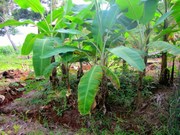Sustainable Farm-To-Table In Your Yard
Sustainable Farm-To-Table In Your Yard
Permaculture (Permanent Agriculture) is the conscious design and maintenance of cultivated ecosystems which have the diversity, stability & resilience of natural ecosystems. It is the harmonious integration of landscape, people & appropriate technologies, providing good, shelter, energy & other needs in a sustainable way. Permaculture is a philosophy and an approach to land use which works with natural rhythms & patterns, weaving together the elements of microclimate, annual & perennial plants, animals, water & soil management, & human needs into intricately connected & productive communities. - Bill Mollison & Scott Pittman, La Tierra Community CA PDC flyer
FREE Weekly Classes at Vista Manor and Estrella De Oro, Wednesday Evenings, 7 to 8
PERMACULTURE 101 - BEING WATER WISE
As Southern California is now considered an arid climate as current rainfall is in the single digits, let's discuss other water sources close to home such as grey water recycling and rain catchments .
Feb 1, 2017 Vista Manor Club House 7pm -8 pm
Feb 8, 2017 Estrella De Oro Club House 7pm -8 pm (Repeated)
Feb 11, 2017 Vista Manor, Space 4, 10am to 12 pm,
FREE Hands on Demo for Laundry to Landscape Installation
PERMACULTURE 101 - NO TILL GARDENING
In the soil under our feet, lives a vibrant community of organisms that assist our garden.
This talk will focus on the best ways to encourage this community while adding edible vegetation.
Feb 15, 2017 Vista Manor Club House 7pm -8 pm
Feb 22, 2017 Estrella De Oro Club House 7pm -8 pm (Repeated)
Helping you to plant sustainable foods in your own yard
Dancing Raven Ranch & Retreat Center
Creating a Year Round Food Forest
A food forest is a gardening technique that is based on a woodland ecosystem by substituting edible trees, shrubs, perennials and annuals. Fruit and nut trees make up the upper level, while berry shrubs, edible perennials and annuals make up the lower levels.
For more information or inquiries, please send an email to: dancing.raven_rrc@yahoo.com
One example, A Banana Circle: The banana circle is a relatively easy design feature to construct and quickly planted out with cuttings and root division. When constructed correctly it serves mainly as a spot to cycle the constant flow of organic matter that is dropping from the jungle and coming out of the homes there. https://treeyopermacultureedu.wordpress.com/chapter-10-the-humid-tropics/banana-circle/.
Grey Water for Fruit Trees
Start with a simple, cost-effective landscape irrigation system. In our county, it is best to use a distribution system that sends the grey water out to the catch basins near your fruit trees. Why fruit trees and not herbaceous plants? The water is first filtered by the earth in the catch basin and further filtered by the trees themselves. The system is not foolproof and regular inspection is suggested to ensure that water is following correctly to the designated trees.
Greywater may contain traces of dirt, food, grease, hair, and certain household cleaning products. While greywater may look “dirty,” it is a safe and even beneficial source of irrigation water, if the proper soaps are used, in a yard. Keep in mind that if greywater is released into rivers, lakes, or estuaries, its nutrients become pollutants, but to plants, they are valuable fertilizer. Aside from the obvious benefits of saving water (and money on your water bill), reusing your greywater keeps it out of the sewer or septic system, thereby reducing the chance that it will pollute local water bodies. Reusing greywater for irrigation reconnects urban residents and our backyard gardens to the natural water cycle.
A keyhole garden is a type of raised bed that uses recycled materials to sustain a garden in otherwise unfavorable conditions.
The idea is to build a circular raised bed, often out of recycled resources with a compost basket in the center.
Within the circle there is a “slice” cut out for easy access to the compost pile that creates a keyhole shape.
The raised bed is filled with soil that slopes gently away from middle.
Using the water from dish washing in the compost basket, the moisture out moves out to through the bed. The water carries nutrients from the decomposing compost material, while feeding the soil and irrigating it at the same time.
Also, by using hardware cloth underneath the garden and a hard-to-climb side, it keeps out gophers and other small animals.


